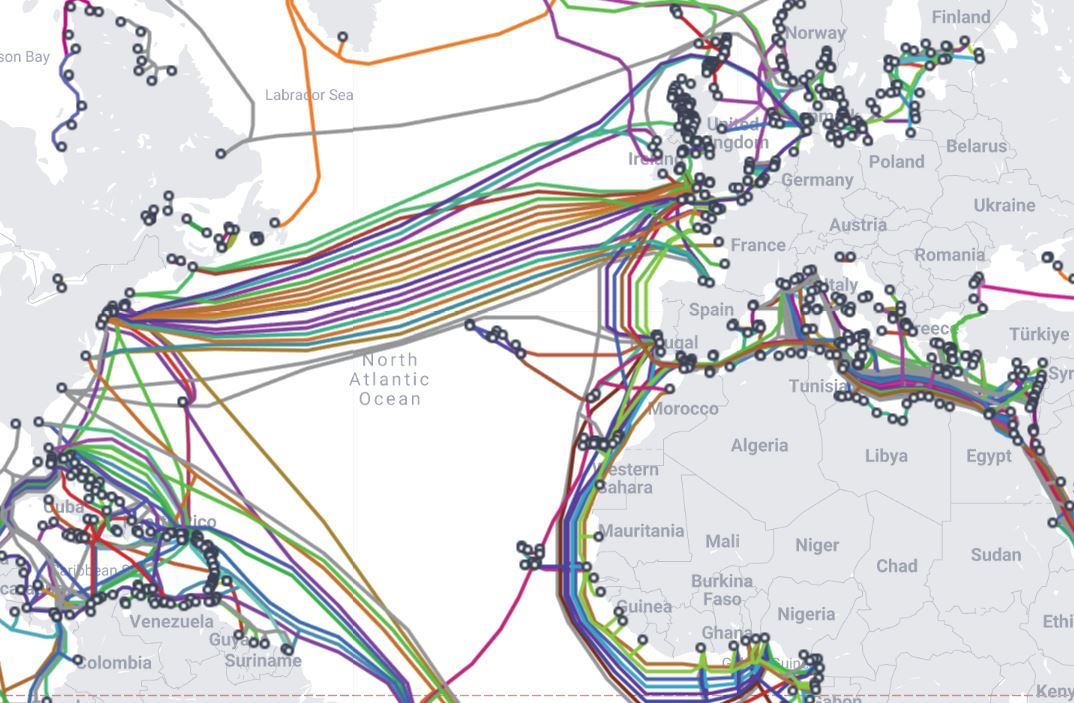


The Secret Life of the 500+ Cables That Run the Internet
By Stephen Shankland for CNET
The concert is in London. You’re watching it live from your home in Atlanta. What makes that possible is a network of subsea cables draped across the cold, dark contours of the ocean floor, transmitting sights and sounds at the speed of light through strands of glass fiber as thin as your hair but thousands of miles long.
These cables, only about as thick as a garden hose, are high-tech marvels. The fastest, the newly completed transatlantic cable called Amitié and funded by Microsoft, Meta and others, can carry 400 terabits of data per second. That’s 400,000 times faster than your home broadband if you’re lucky enough to have high-end gigabit service.
And yet subsea cables are low-tech, too, coated in tar and unspooled by ships employing basically the same process used in the 1850s to lay the first transatlantic telegraph cable. SubCom, a subsea-cable maker based in New Jersey, evolved from a rope manufacturer with a factory next to a deep-water port for easy loading onto ships.
Though satellite links are becoming more important with orbiting systems like SpaceX’s Starlink, subsea cables are the workhorses of global commerce and communications, carrying more than 99% of traffic between continents. TeleGeography, an analyst firm that tracks the business, knows of 552 existing and planned subsea cables, and more are on the way as the internet spreads to every part of the globe and every corner of our lives.
You probably know that tech giants like Meta, Microsoft, Amazon and Google run the brains of the internet. They’re called “hyperscalers” for operating hundreds of data centers packed with millions of servers. You might not know that they also increasingly run the internet’s nervous system, too.
For more, click here.